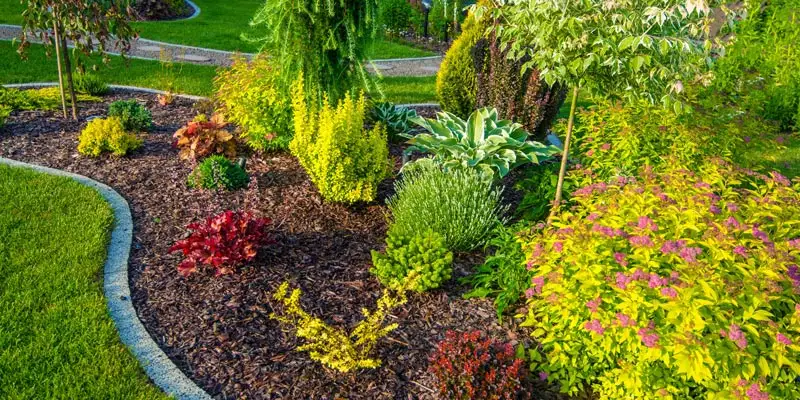Some Known Details About Landscape Design
The Only Guide to Landscape Design
Table of ContentsThe 10-Second Trick For Landscape DesignNot known Facts About Landscape DesignAbout Landscape DesignThe Facts About Landscape Design Uncovered
Formal style motif. Credit Rating: Gail Hansen, UF/IFAS The lawn is an expansion of the home where a selection of activities take area. A yard can usually be split into three areas: public (the front yard), exclusive (the garden), and solution (usually the side backyard). The place of task locations depends primarily on the kind of area, the dimension of area needed, the kind of task, and the preferred proximity to various other activities and frameworks (Landscape Design).
The outside wall of your home typically offers as the first wall or starting point of an outside area. Incompatible usages need to be separated, and associated tasks, such as cooking and eating, must be created to make the lawn much more efficient and pleasurable. When utilizing hardscape to create spaces, utilize building and construction material comparable to that made use of in your home for connection from your home into the garden.
Connected spaces. Credit Scores: Gail Hansen, UF/IFAS Using comparable hardscape functions and repeating plants draws the eye around the yard.
This supplies a feeling of secret that advertises exploration and discovery of the landscape. From a style perspective, plant materials have three significant functions in the landscape: visual, architectural and practical. Aesthetically, plants develop an aesthetically positive setting and structurally plants arrange and define areas. Plants are practical since they can change the setting for the comfort of the customer by changing light, temperature level and humidity.
What Does Landscape Design Do?
For emotional convenience plants are used as physical or implied obstacles for personal privacy and safety. Physical obstacles block both the sight and accessibility to a room and consist of fences, wall surfaces and plant bushes. Landscape Design. Suggested barriers, commonly reduced expanding plants, obstruct access yet not the sight (Figure 9). Various other functions of plants consist of cleaning the air, preventing disintegration and dirt loss, preserving wetness in the soil, and returning natural matter to the soil.
Physical and suggested obstacles. Credit Report: Gail Hansen, UF/IFAS For these factors, the kinds of plants to be used (such as trees, shrubs, or groundcovers) need to be chosen in the beginning of planning. Plant kinds are chosen for their practical capabilities to ensure that their future objective and required room can be considered at the exact same time.
The above plane, the vertical plane and the ground plane should all be taken into consideration to create enclosure. Once the shape of a plant bed has actually been developed, the plants need official statement to be massed (grouped) and split to accomplish aesthetic unity and the desired amount of enclosure. The size of a plant mass will certainly rely on the overall dimension of the backyard, the size of the private plants in the mass, and the emphasis or impact desired from the plant material.
Each plant mass is in front of, behind, or next to, another mass. Credit Scores: Gail Hansen, UF/IFAS Duplicating plants within a mass and duplicating masses with similar plants links the garden together. The specific plant characteristics should be considered to efficiently layer and mass plants.
Excitement About Landscape Design
All plant structures begin with the main framework plants, the big, primarily evergreen history plants-such as the trees and large hedges. These plants separate or enframe rooms, manage the size of the area, and supply the starting factor for picking the suitable qualities of the 2nd layer, midground plants, for massing and infill.
Essential factors in the garden ought to be highlighted by the use one-of-a-kind plants, distinct structures, or yard accessories. Noting limits or entrances to spaces can be performed with gateways, arbors, and steps, or with the use of one-of-a-kind and colorful plants. The kind and/or style theme of the garden will typically aid determine the vital factors and exactly how they should be highlighted.
Various other crucial locations in the lawn are focal points, which is made use of to visually arrange a landscaped location. Various perspectives or point of views can reveal various structures in the landscape that may require a selection of focal factors.
The Basic Principles Of Landscape Design
Figure 13. Plant forms. Credit History: Gail Hansen, UF/IFAS After kind, structure is the following leading function of a plant; rugged, tool and great appearances can be utilized for comparison and focus in the landscape. Kind More about the author and appearance both trump shade in the garden for most of the year. Nonetheless, throughout particular seasons, shade will be the most recognizable attribute of the yard.


The pleasant fragrance of plants, the sound of wind in the trees, the audio and texture of water, and the shades and structures of sculptures, pots and garden furnishings all contribute to the experience of the garden. One information that is frequently forgotten is the impact of light on the aesthetics of the plants.
The whole garden modifications in function and appearance over the training course of the day, and the course of a year, as the light and temperature level adjustment from early morning to evening and period to period. Plant selection need to take into consideration a plant's development rate, its fully grown dimension and kind, and the upkeep it will certainly call for.
It is necessary to know the ultimate fully grown dimension of plants so they can be put in the right location and spaced correctly when they are mounted. Providing plants space to grow is a difficulty because the usual mature size try this site is typically based upon optimum expanding conditions and the ecological problems of a site may trigger a plant to enlarge or stay smaller sized.